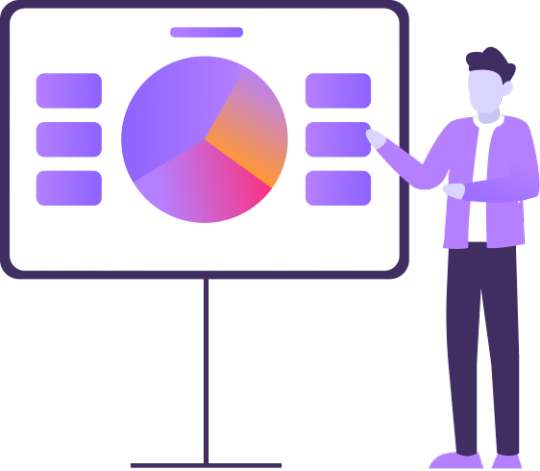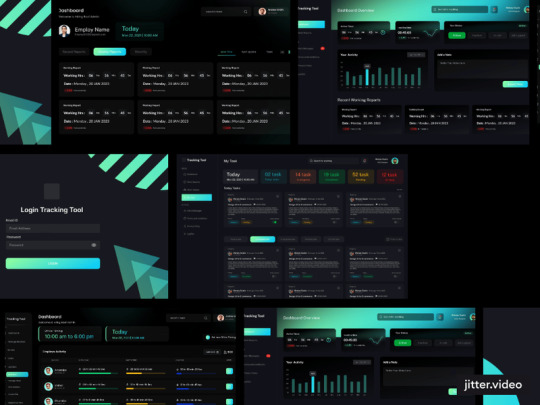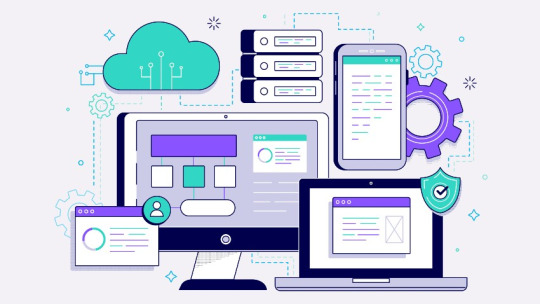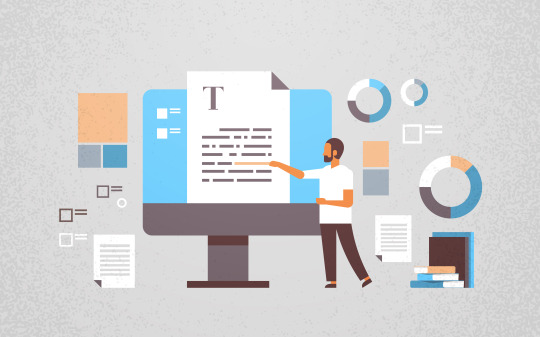#ClickUp Workspace Optimization
Explore tagged Tumblr posts
Text
Optimize Your ClickUp Workspace to Streamline Business Operations
Optimizing your ClickUp workspace is essential to streamline business operations and boost productivity. With ClickUp Workspace Optimization, you can tailor the platform to fit your team's unique workflows, ensuring every task, project, and communication flows smoothly. Start by organizing folders, lists, and tasks logically, reducing clutter and improving accessibility. Use custom statuses and automations to minimize manual work, allowing your team to focus on high-priority activities. Integrate key tools and set up dashboards to monitor progress in real-time, enhancing visibility across projects. Additionally, establishing clear naming conventions and permissions helps maintain consistency and security. Regularly reviewing and refining your ClickUp workspace ensures it evolves with your business needs. By investing time in ClickUp Workspace Optimization, you create an efficient environment that supports collaboration, reduces bottlenecks, and ultimately accelerates business growth. This strategic approach transforms ClickUp into a powerhouse for managing operations seamlessly.
0 notes
Text
Optimize ClickUp Workspace for Better Task Management and Workflow Efficiency
Is your team drowning in a sea of scattered tasks and fragmented workflows? It’s time to flip the script. Upficient’s ClickUp Workspaces provide the structure and efficiency you need to turn everyday challenges into streamlined success stories. This isn’t just project management—it’s a smarter, faster, and more collaborative way to work.
Reimagine Task Management
Forget about endless email threads and forgotten to-do lists. Upficient’s ClickUp Workspaces bring all your tasks under one roof, giving you complete control and clarity. Assign responsibilities, track deadlines, and monitor progress in real-time—whether you’re managing a single project or overseeing multiple teams.
Tailor Workflows to Work Your Way
At Upficient, we understand that no two teams are alike. That’s why ClickUp Workspaces offer full customization, allowing you to design workflows that match your exact needs. From automating repetitive tasks to creating visual timelines with Gantt charts or Kanban boards, our platform molds itself around your team’s style.

Make Collaboration Effortless
Say goodbye to silos and hello to seamless communication. Upficient’s ClickUp Workspaces enable real-time collaboration through integrated chat, document sharing, and task updates. Team members can comment, tag, and share insights directly within tasks, ensuring that no detail is overlooked.
Data-Driven Success at Your Fingertips
How do you know if your workflows are working? Upficient’s advanced reporting tools provide the insights you need to stay on track. Dive into analytics that reveal productivity trends, project timelines, and team performance, allowing you to refine strategies and deliver better results.
Why Upficient’s ClickUp Workspaces Are the Game-Changer You Need
Whether you’re leading a small team or managing a global enterprise, our solution adapts to your scale and goals. Upficient’s ClickUp Workspaces turn complex project management into a streamlined, effortless experience, giving you the tools to tackle any challenge.
Ready to move from chaos to clarity? Optimize your ClickUp Workspace today and watch your team’s efficiency soar. Let Upficient guide you to a brighter, more organized future.
1 note
·
View note
Text
Revolutionize Efficiency with Top AI Productivity & Lead Generation Tools
In the quickly changing the world, the technologies in the artificial intelligence can be thus seen to highly contribute to productivity as well as lead generation for businesses. All of these tools use artificial intelligence analytics to boost productivity, automate processes. Based upon knowledge from TechLaugh, this blog focuses on the best AI tools that exist in the present day, discussing their advantages and successes, responding to people’s questions, and sharing the experiences of others.

AI Productivity Tools: One way of increasing ROI is by enhancing operational efficiency.
AI staff improvement tools are meant to help overcome some daily tasks, manage the flow of work and increase the efficiency. These tools leverage upon the use of AI technologies such as machine learning and natural language processing to enhance business operations.Here are some leading AI productivity tools:
Notion AI
Overview: Notion AI is an extension of the workspace within Notion that provides intelligent recommendations and performs many automatic actions within the course of project management.
Case Study: There is a recorded case of a digital marketing agency adopting Notion AI to handle project process. The team productivity of the employees increased by 35 percent while the time taken to complete projects was cut down tremendously.
Testimonial: At Notion AI has made a significant impact on improving the management of our project. This is primarily because the software advances al our tedious procedures thereby providing intelligent prompts.
2. ClickUp
Overview: ClickUp is a tool that has a range of functionality such as task management and artificial intelligence for scheduling among others.
Case Study: One day, a tech startup in America decided to apply AI aspects in ClickUp for solving project management and communication. This led to an increase of task completion rate by 40% and reduction in delayed projects by 30%.
Testimonial: ”ClickUp offers some AI tools that have increased our efficiency at work; we tackle more projects with less downtime and the results are better.”
3. Monday. com
Overview: Monday. com is a tool that uses artificial intelligence to provide tools for project management such that one can plan, monitor and manage their teams effectively.
Case Study: This is illustrated in a retail company that adopted Monday. company can benefit using AI functions of com to enhance the control of its inventory and advertising. The organisation received a 25 per cent improvement in the process efficiency, and a 15 per cent uplift to their marketing return on investment.
Testimonial: “I have being using Monday. com AI tools to help in managing our project and marketing them and have recorded impressive results”.
AI Lead Generation Tools: The topic on this part is Sales Performance Improvement.
AI lead generation tools are software tools which help in finding out the potential leads, qualifying and nurturing them to become customers. These tools allow businesses to identify that large pool of high-value leads that can be targeted through the most optimal way. Here are some top AI lead generation tools:Here are some top AI lead generation tools:
HubSpot AI
Overview: Currently, AI is used in HubSpot to enhance lead scoring and email follow-ups and to generate relevant recommendations based on the customers’ behavior.
Case Study: An e-commerce company implemented HubSpot AI features to sharpen the leads cultivation process and further automation of follow-ups. The team raised its lead conversion rates by 50 percent and grew the sales pipeline by 30 percent.
Testimonial: AI integrations at HubSpot have been instrumental in changing how we lead generation has been done before essentially enhancing our campaigns.
2. ZoomInfo
Overview: There are new features in ZoomInfo including geographic information, contact data, and sales hints based on the application of artificial intelligence.
Case Study: An up and coming financial services firm used ZoomInfo’s AI features to increase their lead generation and connect with prospective clients increasing lead response by 45% and sales leads by 25%.
Testimonial: ‘I am glad that through the application of AI, ZoomInfo has made it easier for us to generate leads, especially those which are potentially valuable.’ — Emily R. , VP of Sales
3. LinkedIn Sales Navigator
Overview: LinkedIn Sales Navigator makes use of AI in a way that it is able to identify potential prospects from LinkedIn profile and their activities.
Case Study: In a software company, LinkedIn Sales Navigator was used to optimize the leads prospecting which resulted in the gain of 35% of the number of sales-ready leads and 20% of closed-won deals.
Testimonial: One of the new features of LinkedIn Sales Navigator that makes it very helpful is the recommendations provided by AI. It has improved our leads generation in comparison to the previous year along with increased engagement rates.
Frequently Asked Questions (FAQs)
1. What is the meaning of the term AI productivity tools? AI productivity tools are designed to apply artificial intelligence in different functional areas of business, with the main purpose to create value by supporting different processes and activities in an organization, to guarantee effectiveness and efficiency in business organization practices.
2. The main idea of using AI lead generation tools How does it work? AI lead generation tools involve evaluating data to find possible leads, categorising them, scoring them accordingly and then contacting them. They assist the businesses to locate and communicate with potential and quality buyers in the marketplace much effectively.
3. Are there ways for those AI tools to be incorporated into already acquired software out there? Yes, most of the AI tools are designed to work with the existing business applications like CRM, project management tools, email marketing tools and other communication platforms thus making their implementation easier and more effective.
4. Is the use of AI tools relevant for the small business? Absolutely. AI tools are available in different forms with varying capabilities whereby many of the modern AI tools are developed to be suitable for small and medium scale enterprises. They level the playing field in extent to which leads are generated and the extent to which many tasks are automated.
5. What is the rate of return (and risk) of investment with artificial intelligence frameworks? The return that can be realised through the adoption of AI tools is normally high since the business is most likely to experience increased production, reduced costs and high revenues. The actual ROI will highly depend on the organisational tools of choice and how they are singly and jointly implemented within the required business environment.
2 notes
·
View notes
Text
Software & Tools Training: Unlock Your Digital Potential with Gritty Tech
In a technology-driven world, proficiency in digital tools is no longer optional—it’s essential. Whether you're an entrepreneur, freelancer, or working professional, upgrading your skills through structured Software & Tools Training can be the most impactful decision for your career. At Gritty Tech, we believe learning should be practical, accessible, and results-oriented For More...
We provide high-quality education focused on real-world application. Our Software & Tools Training programs are designed to meet the diverse needs of individuals and businesses across industries. With a network of professional tutors spanning over 110 countries, we’ve created a global community committed to continuous learning.
What Is Software & Tools Training?
Software & Tools Training refers to structured learning programs that help individuals understand and effectively use digital software and applications. This includes training in productivity software like Microsoft Office, cloud-based platforms like Google Workspace, data analysis tools such as Excel and Tableau, project management systems like Jira and Trello, and specialized applications like Adobe Photoshop, AutoCAD, or QuickBooks.
These programs are not just about clicking buttons—they’re about understanding functionality, improving workflows, and mastering practical problem-solving using digital solutions.
Why Choose Software & Tools Training?
Career Advancement Employees with advanced digital skills stand out in job markets. Many job roles now require knowledge of multiple software tools. Our training ensures you're fully equipped.
Efficiency and Productivity Learning to use tools efficiently leads to faster task execution, fewer mistakes, and better team collaboration.
Business Growth For businesses, trained staff leads to optimized operations, better data handling, and smarter decision-making.
Remote Work Readiness In an increasingly remote-first world, understanding collaboration and project tools is critical. Our Software & Tools Training includes guidance on tools like Slack, Zoom, and Asana.
Why Gritty Tech is the Right Choice
Gritty Tech has positioned itself as a trusted name in online learning, especially for professionals seeking Software & Tools Training. Here’s what sets us apart:
1. Global Network of Tutors
We have a network of tutors in over 110 countries. Each trainer is not only certified but also experienced in practical applications of the tools they teach. This ensures our learners receive relevant, up-to-date, and hands-on instruction.
2. Affordable Pricing
We’re committed to providing top-tier education at rates that make sense. Our Software & Tools Training programs are priced competitively, making them accessible without compromising on quality.
3. Flexible Payment Plans
We offer flexible payment options, including monthly and session-wise plans. Whether you’re an individual learner or a corporate client, we tailor solutions to fit your budget.
4. Easy Refund and Tutor Replacement Policy
Satisfaction is key. If you're not happy with a session or tutor, we provide easy refunds or replacement tutors to ensure you always receive quality education.
5. Customized Learning Paths
Our courses are not one-size-fits-all. We assess your goals and design personalized training plans to help you learn at your pace and preference.
Types of Software & Tools Training Offered
Office Productivity Tools
Microsoft Excel, Word, PowerPoint
Google Docs, Sheets, Slides
Design & Creative Software
Adobe Photoshop, Illustrator, Premiere Pro
Canva for business
Accounting and Finance Tools
QuickBooks, Zoho Books
Microsoft Dynamics
Data Analysis Tools
Excel Advanced, Power BI, Tableau
SQL basics for data handling
Project Management Software
Jira, Trello, Monday.com
Asana and ClickUp
Collaboration & Communication
Slack, Zoom, Microsoft Teams
Notion and Evernote
We also offer custom corporate Software & Tools Training tailored to industry needs.
How Software & Tools Training Aligns with Industry Demands
Recruiters and HR professionals consistently list software proficiency as a top requirement. Companies rely on digital tools to track projects, communicate across teams, manage customer data, and analyze performance.
With technologies evolving rapidly, the ability to learn and adapt to new software is considered a critical skill. Gritty Tech’s training helps individuals bridge this gap efficiently.
What to Expect from Our Training Sessions
Interactive live sessions with certified tutors
Practical, task-oriented exercises
Access to recordings and downloadable resources
Assessment-based progress tracking
Certificates upon course completion
Every session is structured to deliver value—combining theory with applicable knowledge you can use immediately.
Frequently Asked Questions (FAQs)
1. What is Software & Tools Training?
Software & Tools Training is a guided learning program focused on teaching individuals and teams how to effectively use digital applications for productivity, collaboration, design, and analysis.
2. Who can benefit from Software & Tools Training?
Anyone—from students to CEOs—can benefit from Software & Tools Training. Whether you’re learning to use Excel for data or Photoshop for design, we have a course for you.
3. Is Software & Tools Training at Gritty Tech beginner-friendly?
Yes, our Software & Tools Training programs start with foundational topics and gradually move to advanced applications, making them ideal for beginners and experienced users alike.
4. How long does Software & Tools Training take?
Training duration depends on the tool and your learning pace. We offer short-term crash courses and longer, in-depth programs depending on your requirements.
5. Do I receive a certificate after completing the Software & Tools Training?
Yes. After completing your Software & Tools Training, you receive a verified certificate, which can be added to your resume or LinkedIn profile.
6. Are there live classes or only recorded sessions?
We offer both. You can attend live, interactive classes or access recorded sessions at your convenience as part of your Software & Tools Training plan.
7. Can I switch tutors during my Software & Tools Training?
Absolutely. If you're not satisfied, Gritty Tech provides easy tutor replacement options to ensure the best learning experience throughout your Software & Tools Training journey.
8. Do you offer Software & Tools Training for teams and companies?
Yes. We provide enterprise-level Software & Tools Training tailored for businesses, including employee upskilling programs and group sessions.
9. How is Gritty Tech’s Software & Tools Training different from others?
We offer hands-on, practical training led by global tutors, with flexible payment plans, personalized support, and a satisfaction guarantee.
10. How do I enroll in Software & Tools Training with Gritty Tech?
Enrollment is easy. Visit our official website, choose your desired course under Software & Tools Training, select your plan, and get started in minutes.
Conclusion
Software is the language of modern business. Without the ability to use digital tools, professionals risk falling behind in a fast-paced world. That’s why investing in Software & Tools Training is not just beneficial—it’s essential.
Gritty Tech has reimagined how software skills are taught by creating a system that is efficient, affordable, and learner-focused. With our commitment to quality education, global tutor support, and flexible learning paths, you can confidently upgrade your skillset and open new career opportunities.
Let your learning journey begin with Gritty Tech. Explore our Software & Tools Training programs today and take the first step toward digital mastery.
Would you like me to generate the SEO Title and Meta Description for this content now?
0 notes
Text
Mastering The Remote Work Life: Solutions Every Digital Nomad Needs

Remote work offers flexibility and independence, but it has unique challenges that can undermine productivity and joy. From blurred work-life boundaries to isolation and distractions, remote workers need intentional steps to thrive. Here is a practical guide to the best solutions for common remote work challenges:
1. Challenge: Time Blindness & Overworking
Solution: Scheduling + Time Awareness
Without reminders in the office, work time can creep into personal time. Resist this by:
Having Fixed Work Hours: Establish start/end times and make them known to your team.
Time Tracking: Use something like a toggletimer to track where your time is going visually. This is not micromanagement—it's about intercepting inefficiencies (e.g., unconscious 3-hour email binges) and logging off.
Calendar Blocking: Schedule deep work, meetings, breaks, and personal time. Make these blocks non-negotiable and schedule them first.
2. Challenge: Home Distractions
Solution: Environment Design + Focus Techniques
Home disorganization can disrupt concentration. Take back control by:
Dedicated Workspace: Even a dedicated small space signals "work mode."
Noise Management: Listen using noise-canceling headphones or ambient sound programs (e.g., rain noise).
Pomodoro Technique: Alternate between 25-minute work sessions and 5-minute breaks. Apps such as Focus Keeper automate this for you.
3. Challenge: Isolation & Burnout
Solution: Active Engagement + Boundaries
Loneliness and constant work mode are bad for mental well-being. Counteract that with:
Virtual Socializing: Enjoy regular virtual coffees or virtual work communities with coworkers.
Ritualized Breaks: Take a walk, stretch, or meditate—off screens.
Offline Activities: Emphasize activities that don't involve a keyboard (e.g., gardening, cooking).
4. Challenge: Communication Gaps
Solution: Clarity-First Practices
Miscommunication escalates rapidly remotely. Avoid this by:
Over-communicating: Check for understanding in communications (e.g., "To summarize, next steps are X").
Async-First Culture: Record by default (Loom, Notion) rather than live calls when feasible.
Weekly Syncs: Brief video check-ins for aligning priorities and resolving blockers.
5. Challenge: Unpredictable Productivity
Solution: Task Batching + Energy Alignment
Energy will fluctuate normally. Optimize output by:
Batching Similar Tasks: Batch similar emails, calls, or creative work to minimize context-switching.
Energy Mapping: Track your most focused times (e.g., using a toggletimer to indicate when you're at your most focused). Schedule complex tasks at peak energy times.
The "Two-Minute Rule": If it takes less than 2 minutes, do it immediately.
6. Challenge: Tech Fatigue
Solution: Digital Minimalism
Endless notifications are stressful. Regain focus by:
App Consolidation: Consolidate 5 apps into 1 single app (e.g., ClickUp for tasks/docs).
Notification Culls: Mute non-essential notifications. Check Slack/email occasionally, not constantly.
Analog Alternatives: Brainstorm with a notepad instead of a screen.
The Golden Rule: Try Everything There isn't a one-size-fits-all solution

What suits one remote worker will not suit another. Experiment with tools (such as time auditors like a Toggletimer, habits, and environments. Monitor your mood and productivity for a week, and repeat. Remote work relies on self-awareness and flexible systems rather than strict rules.
Written By Toggletimer
0 notes
Text
10 Best Workflow Apps to Streamline Your Team’s Daily Operations
productivity and efficiency depend on more than just good communication—they demand seamless workflows. Whether you're managing a remote team, juggling multiple projects, or coordinating across departments, the right workflow app can make all the difference.
Workflow apps automate routine tasks, centralize communication, and ensure that teams stay aligned. If you're looking to streamline your daily operations, here are 10 of the best workflow apps available in 2025.

1. Trello
Best for: Visual project management Trello uses boards, lists, and cards to create a simple, intuitive layout. Great for tracking progress, assigning tasks, and collaborating across teams, it’s ideal for startups and small teams managing ongoing tasks.
2. Asana
Best for: Task tracking and team collaboration Asana stands out for its clean interface and powerful automation features. You can build custom workflows, assign dependencies, and monitor project timelines—all in one place.
3. Monday.com
Best for: Versatile workflow customization Monday.com offers a flexible platform with templates for marketing, HR, operations, and more. Its visual dashboards help teams monitor workload and productivity in real time.
4. Cflow
Best for: No-code business process automation Cflow enables organizations to automate approval workflows, document routing, and compliance tasks. With its intuitive drag-and-drop builder, users can set up complex workflows without coding knowledge.
5. ClickUp
Best for: All-in-one project and task management ClickUp consolidates task management, time tracking, document collaboration, and automation into a single platform. It's highly customizable and suitable for teams of all sizes.
6. Zapier
Best for: Automating app integrations Zapier isn’t a traditional workflow app but connects over 5,000+ tools like Gmail, Slack, and Google Sheets. Create "Zaps" to automate repetitive tasks between apps, saving hours every week.
7. Slack Workflows
Best for: Internal communication and simple task automation Slack now includes workflow builder capabilities. Teams can automate routine communications, form submissions, approvals, and more—all without leaving the Slack environment.
8. Notion
Best for: Knowledge management and lightweight workflows Notion combines documents, databases, and task lists into one workspace. It's perfect for teams who want flexibility and collaboration tools in a single app.
9. Kissflow
Best for: Enterprise-level workflow management Kissflow offers a comprehensive suite of workflow automation tools for procurement, HR, finance, and IT. It's particularly well-suited for mid-size to large businesses that need structured process automation.
10. Airtable
Best for: Spreadsheets with superpowers Airtable blends database functionality with spreadsheet simplicity. Teams can build custom workflows using views, automations, and integrations, making it ideal for creative and data-driven work.
Why Workflow Apps Matter
Using a workflow app does more than just digitize your processes. It fosters accountability, transparency, and efficiency across teams. With automation features built-in, you reduce manual tasks and increase time spent on strategic work.
Whether you're optimizing marketing campaigns, managing product development, or overseeing client services, the right tool helps eliminate delays and silos. The result? Faster delivery, better collaboration, and a stronger bottom line.
How to Choose the Right Workflow App
When selecting a workflow app, consider the following:
Team size and structure
Integration needs with tools like Slack, Gmail, or CRM systems
Customization and automation capabilities
User-friendliness and scalability
Security and compliance requirements
Most platforms offer free trials, so test a few before committing.
youtube
Final Thoughts
In 2025, staying competitive means embracing tools that help you work smarter—not harder. These top workflow apps empower teams to automate routine operations, increase productivity, and stay aligned on goals. As your business evolves, investing in the right digital workflows can unlock new levels of performance and collaboration.
SITES WE SUPPORT
AI Job Hire Flow - Weebly
SOCIAL LINKS Facebook Twitter LinkedIn
0 notes
Text
Unlock Productivity: Best Free Task Management Software to Use Today

In today’s fast-paced world, staying on top of tasks and deadlines is more crucial than ever. Whether you’re a professional juggling multiple projects or an individual looking to organize your personal life, task management software can be a game changer. The good news? There are plenty of excellent free tools that can help you boost productivity without breaking the bank. Let’s explore some of the best free task management software you can start using today.
1. Optio
It is a powerful Prioritization Tool is a powerful solution designed to help individuals and teams effectively prioritize tasks and projects based on urgency, importance, and impact. With its intuitive interface, it allows users to assess and categorize tasks, ensuring that the most critical activities are tackled first. By providing a clear visual representation of priorities, the tool enhances decision-making, reduces overwhelm, and boosts overall productivity. Whether you're managing a busy work schedule or leading a complex project, Optio Prioritization Tool streamlines task management for optimal results.
Best for: Visual learners and those managing collaborative projects.
2. Asana
Asana is a powerhouse for task management, offering powerful features like task assignments, due dates, file attachments, and custom workflows. The free version supports up to 15 team members, making it ideal for small teams or solo users. It’s perfect for keeping projects organized, as tasks are neatly structured with different project views (list, board, calendar). Asana’s ease of use and robust functionality make it a favorite among many.
Best for: Teams and individuals who need a streamlined, yet comprehensive task management system.
3. Todoist
Todoist is an intuitive task management tool that’s well-loved for its simplicity and effectiveness. It allows you to create tasks, set due dates, and organize them into projects. Todoist’s free version includes most of the essential features, including task priorities and productivity tracking through a karma point system. It’s perfect for personal task management and helps you stay focused throughout your day.
Best for: Personal use and minimalist task management.
4. ClickUp
ClickUp is a versatile project management platform that offers a range of features including task management, docs, reminders, and time tracking. The free version allows you to manage an unlimited number of tasks and offers powerful collaboration features. ClickUp also supports various views (list, board, Gantt chart), making it adaptable to different team structures and work preferences.
Best for: Teams and individuals who need a highly customizable tool for various workflows.
5. Microsoft To Do
Microsoft To Do is a straightforward and user-friendly tool that integrates seamlessly with Microsoft 365. The app allows users to create simple to-do lists, set reminders, and break down tasks into smaller, manageable steps. With its cloud syncing feature, your tasks are accessible on any device, making it a reliable choice for users who need basic task management without any fuss.
Best for: Microsoft 365 users and those who prefer simplicity.
6. Notion
Notion is more than just a task manager – it’s an all-in-one workspace that combines note-taking, task management, databases, and calendars. With its free plan, you can manage tasks while keeping track of your notes, projects, and goals all in one place. Its flexibility allows you to design your workspace to fit your needs, making it an excellent option for people who like to customize their task management system.
Best for: Those who want an all-in-one workspace for tasks, notes, and knowledge management.
Conclusion
Whether you're managing personal tasks, collaborating with a team, or organizing a complex project, these free task management tools can help you stay on top of things. The key to unlocking productivity is finding a tool that works best for your style of working. Test out a few of these options and see which one fits your needs — your future self will thank you!
Ready to take control of your tasks? Choose the tool that suits you best and start managing your day more efficiently today!
0 notes
Text
The landscape of Artificial Intelligence (AI) and Machine Learning (ML) is constantly evolving, with new trends shaping the way businesses operate and innovate. Companies like Hexadecimal Software are at the forefront of these advancements, designing projects that leverage cutting-edge AI and ML technologies to drive efficiency and enhance decision-making.
1. Natural Language Processing (NLP)
One of the most significant trends in AI is the advancement of Natural Language Processing (NLP). NLP enables machines to understand, interpret, and generate human language, facilitating more intuitive interactions between humans and computers. Hexadecimal Software utilizes powerful NLP algorithms to empower applications that can analyze text data for sentiment, extract insights, and automate responses. This capability is crucial for businesses looking to improve customer engagement through chatbots and automated support systems.
2. Data Visualization and Interactive Analytics
As organizations collect vast amounts of data, the need for effective data visualization tools becomes paramount. Hexadecimal Software has developed platforms that allow users to create interactive dashboards and reports easily. By integrating various data sources into a single collaborative workspace, teams can generate insights quickly and make data-driven decisions. This trend emphasizes the importance of making complex data accessible to non-technical users, thereby democratizing data analysis across organizations15.
3. Predictive Analytics
Predictive analytics is another emerging trend that leverages machine learning algorithms to forecast future outcomes based on historical data. Hexadecimal Software implements predictive modeling techniques that help businesses anticipate market trends, customer behavior, and operational efficiencies. For instance, companies can use these insights to optimize inventory management or tailor marketing strategies to specific customer segments, enhancing overall business performance6.
4. Automation through AI
Automation is transforming industries by streamlining processes and reducing manual workloads. AI-driven automation tools can handle repetitive tasks, allowing human employees to focus on more strategic initiatives. Hexadecimal Software offers custom solutions that incorporate automation into various business operations, from customer service to supply chain management. This trend not only boosts productivity but also minimizes errors associated with manual processes56.
5. Enhanced Security with AI
With increasing concerns over data privacy and cybersecurity threats, AI is playing a pivotal role in enhancing security measures. Machine learning algorithms can analyze patterns in user behavior to detect anomalies that may indicate security breaches. Hexadecimal Software integrates these advanced security features into their projects, ensuring that client data remains protected against evolving threats while complying with regulations56.
Case Studies: Success with Hexadecimal Software
Hexadecimal Software has collaborated with numerous organizations to implement these emerging trends effectively:
StubHub: By realigning its analytics stack with Hex, StubHub improved the speed and quality of its data processing capabilities.
ClickUp: The company transformed a data science churn project into a successful cross-functional initiative that saved customers.
Notion: Utilizing Hex as a central platform allowed Notion's teams—from data science to customer experience—to make informed decisions based on real-time data insights15.
Conclusion
The future of AI and ML is bright, with continuous innovations driving significant changes across industries. Companies like Hexadecimal Software exemplify how harnessing these technologies can lead to transformative outcomes in business operations. As organizations increasingly adopt AI-driven solutions, staying ahead of these trends will be crucial for maintaining competitive advantage in a rapidly changing landscape.
0 notes
Text
Powerful Tools to Enhance Productivity Everywhere
Boost Your Productivity Game
Does it sometimes feel like you’re spinning your wheels without getting anywhere? We’ve all been there! The daily hustle can make us feel overwhelmed as if we’re stuck in a never-ending cycle of tasks without making real progress. The good news? Powerful productivity tools are here to rescue you from the chaos! Whether you're tackling a group project or managing your day-to-day tasks, these tools can make a world of difference. Let’s dive into the best tools that can enhance your productivity, no matter where you are!

Why Are Productivity Tools a Must-Have?
In today’s fast-paced world, productivity tools are more than just nice-to-haves they're essential! Here’s why incorporating these tools into your routine can be a game changer:
Streamline Your Tasks: These tools help you organize your workflow, ensuring that you can focus on what really matters. By having a clear structure for your tasks, you can prioritize what needs to be done first, reducing the stress of juggling multiple responsibilities.
Minimize Distractions: Let’s face it distractions are everywhere! With the right tools, you can cut out the noise and stay focused on your tasks. This means fewer interruptions and a more concentrated effort on your work, leading to better results.
Improve Teamwork: Effective tools facilitate communication and collaboration, ensuring everyone stays connected. In today’s world, many teams work remotely, making clear communication more crucial than ever. Productivity tools bridge the gap, enabling seamless collaboration regardless of location.
Must-Have Productivity Tools
Now that you know why productivity tools are vital, let’s explore some must-have options that can transform the way you work:
1. Project Management Tools

Asana: Want to keep your team organized? Asana is a powerful project management tool that allows you to create and track projects easily. You can assign tasks, set deadlines, and monitor progress, ensuring everyone knows their responsibilities. With Asana, you can visualize your projects through boards and lists, making it easy to see what’s next on the agenda.
ClickUp: Looking for an all-in-one solution? ClickUp combines task management, time tracking, and collaboration features, making it perfect for any team. Its flexibility allows you to customize your workspace, ensuring that it fits your team's unique workflow. Plus, with built-in time tracking, you can see how much time is spent on each task, helping you identify areas for improvement.
2. Communication Tools
Zoom: Need to hold a virtual meeting? Zoom’s reliable video quality and user-friendly interface make it easy to connect with anyone, anywhere. You can host meetings, webinars, or even social events to keep your team engaged. Zoom's breakout room feature is particularly useful for team discussions or brainstorming sessions.
Google Meet: If you're already using Google Workspace, then Google Meet is an excellent choice. It integrates seamlessly with your calendar and other Google apps, allowing you to schedule and join meetings effortlessly. The user-friendly interface makes it easy for anyone to jump into a video call, regardless of their tech savvy.
3. Time Management Tools

Clockify: Want to see where your time goes? Clockify is a fantastic tool for tracking your activities. It helps you identify areas where you might be spending too much time, allowing you to adjust and improve your efficiency. With Clockify, you can easily generate reports to see how your time is allocated across various projects.
Focus@Will: Struggling to concentrate? Focus@Will offers specially curated playlists designed to boost your focus and productivity. The music is scientifically optimized to help you concentrate better, making it easier to get into a flow state while working on tasks.
Conclusion
Using these tools in your daily life can help you enhance your productivity and take control of your time. Imagine having a clear plan for your day, with tools that help you stay focused and collaborate effortlessly with your team. Not only will you feel more accomplished, but you’ll also reduce the stress that comes with feeling overwhelmed.
So, are you ready to boost your productivity? Start exploring these amazing tools and watch your efficiency soar! Remember, the key to productivity is not just about working harder but working smarter. Embrace these tools, and you'll be well on your way to becoming a productivity powerhouse!
1 note
·
View note
Text
Best Workflow Management Tools: Boost Productivity and Efficiency
In today’s fast-paced business environment, effective workflow management is crucial for enhancing productivity and efficiency. The right workflow management tools can streamline processes, reduce errors, and ensure that tasks are completed on time. In this blog, we’ll explore some of the best workflow management tools available and how they can help optimize your operations.

1. Cflow
Cflow is a powerful workflow management tool designed to help businesses automate and streamline their processes. Its intuitive drag-and-drop interface allows users to design custom workflows tailored to their specific needs. Cflow supports various process types, including approval workflows, document management, and task tracking. With features like real-time notifications, task assignments, and detailed reporting, Cflow enhances visibility and control over workflows. Integration with other tools and applications further boosts its effectiveness, making it a top choice for organizations looking to optimize their workflow management.
2. Asana
Asana is a popular project management tool known for its user-friendly interface and robust features. It allows teams to create tasks, assign responsibilities, set deadlines, and track progress. With its customizable dashboards and various project views (list, board, calendar), Asana helps teams stay organized and aligned. Integration with other tools like Slack, Google Drive, and Microsoft Teams enhances its functionality, making it a top choice for managing complex workflows.
3. Trello
Trello is a versatile workflow management tool that uses boards, lists, and cards to organize tasks and projects. Its visual approach makes it easy to track progress and manage team activities. Trello’s flexibility allows users to create custom workflows and automate repetitive tasks using Power-Ups. Its simple design and integration with tools such as Google Drive, Slack, and Evernote make it ideal for teams looking for a straightforward solution to manage their work.
4. Monday.com
Monday.com is a comprehensive work operating system that provides a visual platform for managing workflows. It offers customizable templates, automation features, and integration with various third-party apps. With its easy-to-use interface, teams can create and manage tasks, track project progress, and communicate effectively. The tool’s ability to adapt to different project types and team needs makes it a valuable asset for improving productivity and collaboration.
5. Smartsheet
Smartsheet combines the familiarity of spreadsheets with powerful project management capabilities. It offers features like task tracking, resource management, and reporting. Smartsheet’s grid-based interface allows users to create detailed project plans and track progress in real-time. Its integration with tools like Microsoft Office 365, Google Workspace, and various CRM systems enhances its functionality, making it a great choice for teams that require advanced workflow management features.
6. Jira
Jira, developed by Atlassian, is a robust tool designed primarily for software development teams. It supports Agile methodologies, including Scrum and Kanban, and provides features for tracking issues, managing sprints, and reporting progress. Jira’s powerful customization options and integrations with other development tools make it an excellent choice for tech teams looking to streamline their workflow and enhance collaboration.
7. ClickUp
ClickUp is an all-in-one project management tool that offers a range of features to manage workflows efficiently. It includes task management, goal tracking, time tracking, and document sharing. ClickUp’s customizable interface allows teams to create personalized workflows and automate routine tasks. Its integration with popular tools like Slack, Google Workspace, and Trello enhances its versatility, making it a powerful solution for managing diverse workflows.
8. ProcessMaker
ProcessMaker is a business process management (BPM) tool designed to help organizations automate and optimize their workflows. It provides features for process modeling, workflow automation, and real-time analytics. ProcessMaker’s drag-and-drop interface and advanced reporting capabilities make it easy to design and manage complex workflows. Its ability to integrate with various systems and applications helps organizations improve efficiency and streamline their operations.
9. Airtable
Airtable combines the functionality of a spreadsheet with the power of a database. It allows users to organize tasks, track projects, and collaborate with team members using customizable views and templates. Airtable’s intuitive interface and integration with tools like Slack, Google Drive, and Dropbox make it a versatile option for managing workflows and enhancing productivity.
youtube
Conclusion
Choosing the right workflow management tool can significantly impact your organization’s productivity and efficiency. Tools like Cflow, Asana, Trello, Monday.com, Smartsheet, Jira, ClickUp, Process Maker, and Airtable offer diverse features to meet various needs. By leveraging these tools, teams can streamline their processes, reduce manual effort, and achieve better outcomes. Assess your specific needs and consider trying out a few options to find the best fit for your organization’s workflow management requirements. SITES WE SUPPORT
Workflow Apps & Api - Wix
SOCIAL LINKS Facebook Twitter LinkedIn
0 notes
Text
Tidy Up Your Tasks with ClickUp Optimization
Feeling overwhelmed by a cluttered ClickUp workspace? You’re not alone—and we’re here to help. At Upficient Workspace, we make task management easier with simple, smart solutions that clean up your setup and keep your team on track.
Through easy-to-follow ClickUp Workspace Optimization, we organize your folders, lists, and views to match how you work. We remove the extra noise, automate boring tasks, and set up custom workflows that make sense for your daily routine.
No more hunting for tasks or jumping between dashboards. With a clean, optimized ClickUp workspace, you’ll save time, stay focused, and get more done—without the stress.
Whether you’re starting fresh or just need a quick tune-up, Upficient Workspace is here to help you make the most of ClickUp. Let’s get your workspace working for you!
1 note
·
View note
Text
Mastering Project Management with ClickUp for Work and Home Life Balance: A step-by-step implementation and optimization guide to unlocking the power of ClickUp and AI

Get your copy today!
A self-guided handbook for achieving work and home life balance through task management and improved processes and workflow using ClickUp, AI, and automation
Key Features
Master ClickUp's core functionalities, automation, and integrations to become a ClickUp power user in all areas of your life
Discover new habits and goal-setting methods to accomplish your personal and professional goals
Learn with step-by-step guides, FAQs, and a downloadable workbook
Purchase of the print or Kindle book includes a free PDF eBook
Book Description
Do you want to start a business or turn a hobby into a profession, but feel like you're running out of time? Do you want to become a productivity powerhouse, effectively juggling personal and professional responsibilities? Does your team need help boosting efficiency? This comprehensive guide provides practical strategies and action plans to optimize your work and home life using ClickUp.
Achieve project success by setting meaningful KPIs, creating team dashboards, generating real-time reports, and extending ClickUp with integrations. You’ll learn how to implement and optimize your workspace structure, project management, processes, workflows, automation, AI, and how to use ClickUp Brain as a knowledgebase. This book also helps you master ClickUp for home life by using it to manage personal tasks, plan vacations, collaborate on projects, maintain interactive inventory, and track household chores. Finally, you'll explore advanced features, goal setting, and personal approaches to maximize your leverage of ClickUp as your 'accomplishment system.
Whether you're a seasoned user or just getting started, this ClickUp handbook provides best practices and highlights common mistakes for implementing and optimizing ClickUp to unlock its potential and achieve your goals.
What you will learn
Manage the fundamentals of ClickUp and learn feature utilization with ClickApps
Explore new habits, routines, and simplified project management with ClickUp
Manage personal tasks, plan projects, and collaborate on personal events
Grasp advanced process writing strategies and automation planning for complex challenges
Use ClickUp Brain and AI to automate tasks and improve teamwork
Optimize project workflows, task management, time tracking, and integration with other tools
Leverage ClickUp for continuous personal and professional growth, achieving a balanced work and home life
Who this book is for
This book is for anyone who wants more out of life and wants to reclaim time in areas that matter most. It will help everyday people, professionals, entrepreneurs, business owners, project managers, hobbyists, and anyone seeking to enhance their time management skills and productivity. Whether you’re an experienced user or new to ClickUp, this book offers valuable insights, including ClickUp's AI features.
Table of Contents
What Is ClickUp and Why Should I Care?
Discovering the Benefits of Using ClickUp
Setup and Preparation Steps for Unlocking ClickUp
Collaborating with Team Members in ClickUp
Defining and Managing Project Scope
Organizing Projects and Tasks and Clearing Your To-Do Lists by the End of the Day
Tracking Goals, Project Progress, and Productivity with KPIs, Dashboards, and Reporting
Integrating ClickUp with Other Tools and Apps
Personal Task Management with ClickUp
Project Management and Collaborating on Personal Events with Friends and Family
Managing Household Chores and Home-Life Responsibilities
(N.B. Please use the Read Sample option to see further chapters)
#kindle#books#clickup#projectmanagement#productivity#timemanagement#worklifebalance#automation#taskmanagement#goalsetting#aiintegration
0 notes
Text
Efficiency Unleashed: Mastering Workflow with These Tools
Efficiency is the cornerstone of productivity in any organization, and understanding workflow management tools is the key to achieving it. This blog explores the tools that can unleash efficiency, providing insights into their features and how they can be harnessed for optimal results.

The Imperative of Efficient Workflows: Establish the importance of efficient workflows in driving organizational success. Discuss the impact on productivity, employee satisfaction, and the overall bottom line.
Top Workflow Management Tools: Microsoft Power Automate: Seamlessly integrate apps and automate workflows. Zapier: Connects your favorite apps, automating repetitive tasks. Notion: All-in-one workspace for notes, tasks, and project management. Airtable: Combines the simplicity of a spreadsheet with the complexity of a database. ClickUp: A versatile platform for project management and team collaboration. Tailoring Tools to Your Workflow: Explore how these tools can be customized to align with the unique workflow of different teams and industries. Discuss the importance of flexibility and scalability in adapting these tools to evolving business needs.
Collaboration and Communication: Highlight the collaborative features of these tools, emphasizing how they facilitate seamless communication among team members. Discuss the role of transparency in improving collaboration and overall workflow efficiency.
Integrations and Automations: Examine the power of integrations and automations provided by these tools. Showcase how they eliminate manual tasks, reduce errors, and free up valuable time for more strategic activities.
Case Studies: Share real-world examples of organizations that have successfully mastered their workflows using these tools. Illustrate the specific challenges they faced and how the chosen tools addressed those challenges.
Future Trends: Discuss emerging trends in workflow management, such as the integration of AI for predictive analytics
and the use of advanced analytics to optimize workflows further. Explore how staying abreast of these trends can give organizations a competitive advantage.
Implementation Strategies: Offer practical insights into implementing these tools within an organization. Discuss common pitfalls to avoid and provide a roadmap for a smooth transition to a more efficient workflow.
Conclusion: Efficiency unleashed is a force that propels organizations towards success. By mastering workflows with the right tools, businesses can navigate the complexities of modern work environments and emerge as leaders in their respective industries.
youtube
SITES WE SUPPORT
Workflow Process Skill – Wix
#workflowmanagementtools#approvalsoftwaretoautomateworkflows#approvalprocess#preemploymentaccountingassessment#skillassessmenttest#Youtube
0 notes
Text
Maximizing Your Job Productivity While Working Remotely

Maximizing Your Job Productivity While Working Remotely
Are you a remote worker striving to boost productivity when working remotely? If so, you're not alone. In a recent report, Zippia clearly states that 92% of U.S. employees work remotely at least once a week, with 16% of companies being fully remote. Nonetheless, this monumental shift comes with its fair share of challenges: focus and distractions. But don't fret just yet. This article is your guide to maximizing your productivity while working from anywhere. From essential apps and shortcuts to time management strategies, we'll show you productivity tips and tricks to thrive in this new work landscape, so let’s journey on.
Setting Up Your Device for Remote Work

When working remotely, begin by setting up your device. Doing this is vital, as it greatly affects your productivity. Configuring Your Workspace Your workspace is more than just a desk and chair; it should be optimized for productivity and comfort. Consider these factors: Ergonomics: Your desk, chair, and computer should be aligned to prevent any potential strain and discomfort. Proper ergonomics is one of the tips to boost your productivity as a remote worker. Lighting: Natural light is ideal for productivity, but if that's not possible, ensure your workspace is well-lit with artificial light. Noise Level: Find a quiet spot or use noise-canceling headphones to minimize distractions. Organization: Keep your workspace clutter-free and organized to avoid visual distractions that hinder productivity. Optimizing Your Internet Connection A stable internet connection is critical for remote work. Here are some tips to ensure your device is connected efficiently: Choose a Reliable Network: Opt for a dependable Wi-Fi connection. For light tasks, 10 Mbps download and 1 Mbps upload speeds per user should suffice. However, you might require 100 Mbps download or more and over 10 Mbps upload speed, depending on the nature of your work. Optimal Router Placement: Position your router centrally, away from obstacles and walls. Prefer Ethernet When Feasible: For stability, use an ethernet cable for a secure and swift internet connection, particularly for data-intensive tasks. Security Measures for Remote Work Did you know that there’s a hacker attack every 39 seconds? Well, that’s according to a 2023 report released by Astra. That means there’s a very good chance you’ll fall victim to cyberattacks if caution isn’t exercised. Here are some security steps to help you: Install Robust Antivirus Software: Use an updated and reputable antivirus program to keep your device running safely without the threat of cyber attacks. Utilize a Virtual Private Network (VPN): A VPN establishes a secure, encrypted internet connection, guarding against cyberattacks and data breaches. Activate Two-Factor Authentication (2FA): 2FA enhances account security by requiring an additional code or device for login, strengthening your account and password defenses.
Essential Apps for Remote Productivity

Once the setup work is done, it's time to dive into the essential productivity apps. Here, you’ll need to identify the ideal communication, project, task management, and time management apps to work with. Communication Tools Remote work requires effective communication to stay connected with your team, collaborate on projects, and address any issues that may arise. Skype, Asana, Telegram, Adium, and Zoom are some of the most reliable communication apps that can keep you connected to your team when working remotely. Project and Task Management Remote work often involves managing numerous tasks, projects, and deadlines. To stay organized and maintain focus, consider using project and task management apps. These apps won't fix your productivity woes, but they can certainly help you get more done at the end of the day. Clockify, ClickUp, Todoist, and Asana are some of the best project and task management apps. Time Management Apps Effective time management is one of the soft skills you should have when working remotely. Utilize time management apps to stay on course with your daily tasks and enhance your time efficiency. Clockify, Harvest, Tyme, and Hubstaff are all great. These third-party apps offer features such as a timer for tracking the time you spend, reminders for breaks or meetings, and more. Cloud Storage Cloud storage allows file access from anywhere with internet access, facilitating collaboration and mobile work. Popular choices include Dropbox, Google Drive, OneDrive, Amazon Drive, and Box. They offer impressive features like file sharing, automatic syncing, and easy file access from any device.
Troubleshooting Common Productivity Issues

Even with proper workspace and internet setups, technical problems can emerge, and it’s always good to know about prevention and resolution. Performance Optimization You can boost the performance of your device using these steps: Close Unnecessary Apps: Running too many apps can slow down your device. Shut down any unnecessary ones to free up resources. In case you’re using a Mac and encounter unresponsive apps, this guide on how to force close app on Mac should help. Clear Your Cache and Cookies: These temporary files can build up over time and affect your computer's performance. Upgrade your hardware: If performance problems persist, it could suggest the need to upgrade hardware components like RAM or storage space. Handling Technical Glitches Another common issue that can disrupt your productivity is technical glitches. Here are some troubleshooting tips: Restart Your Computer: A simple but effective solution, often resolving various technical glitches. Update Your Software: Keep your operating system and apps up-to-date. Older versions may have bugs causing problems. Troubleshoot Hardware Issues: If the issue lingers, check for hardware problems, like a malfunctioning keyboard or mouse. Backup and Data Recovery Data loss can be catastrophic for remote workers. Therefore, having a backup plan is essential. Trustworthy solutions like Time Machine and Dropbox will safeguard your critical files in case of accidents or technical issues. Backblaze is also a great option and the least expensive backup service, with unlimited storage at just $9 monthly and $99 when you pay a whole year upfront. They even provide a free 15-day trial, so you know what you get before you actually pay for it.
Organizing Your Digital Workspace

Having a cluttered computer can affect your productivity. Keeping your digital workspace orderly ensures you can easily find and access your files when needed, cutting down on the time used to navigate your computer. Here are some of the tips to boost your digital workspace appeal and improve productivity: Efficient File Management Begin by sorting your files into folders and subfolders, categorizing them by projects or topics. This keeps your desktop tidy and helps you find files easily, ensuring you have more time for what really matters. Utilizing Cloud Storage As previously mentioned, cloud storage is an invaluable asset you can’t do without when working remotely. It simplifies file access and sharing while decluttering your computer's storage for enhanced speed. Virtual Desktops and Multiple Spaces Virtual desktops and multiple spaces are features available on most operating systems that allow you to organize your workspace into separate screens for different tasks. This can help reduce desktop clutter and increase focus by separating work-related items from personal ones.
Effective Time Management Techniques

Even with the best time management apps, whether you manage your time correctly boils down to your own discipline and techniques. Here are some effective time management techniques you can implement: Prioritization and To-Do Lists Start your day by listing tasks in order of importance. This method helps you concentrate on critical tasks, prevents feeling overwhelmed, and offers a sense of accomplishment as you complete them. Pomodoro Technique for Focus The Pomodoro technique is a widely used time management approach to improve work performance. It boosts focus and productivity by breaking your work into multiple smaller manageable segments. Here's how it works: Pick a task and get yourself a timer. Set the timer for 25 minutes. Work on the task until the timer goes off. Take a short break of about 5 minutes. Repeat this cycle four times, then take a more extended break of about 15-30 minutes. The technique works because it provides designated breaks and motivates you to beat the timer each time. Scheduling and Calendar Management Lastly, use scheduling and calendar tools to manage your time effectively. Schedule important tasks and meetings on your calendar for a clear overview of your day. This will help you avoid overbooking yourself or missing essential appointments. You can also set reminders for upcoming tasks or events.
Mastering Keyboard Shortcuts and Gestures

While utilizing the mouse or trackpad is convenient, using keyboard shortcuts and gestures can save you a lot of time in the long run. Here are some tips to help you navigate your laptop efficiently: Navigating your Device Efficiently Familiarize yourself with commonly used keyboard shortcuts to save time on routine tasks. They will differ a bit depending on the operating system you’re using, but here are some of them for those using macOS and Windows OS. These shortcuts will let you perform tasks faster, especially when you have multiple apps open. Customizing Keyboard Shortcuts You can also consider customizing keyboard shortcuts on your device. This allows you to assign specific tasks or commands to a keystroke of your choice, making it easier for you to access them. Doing this improves productivity and makes it easy for you to navigate your computer with ultimate ease. Multitasking with Gestures Gestures are specific movements with your trackpad or mouse that trigger actions on your device. For instance, you can use a two-finger pinch to zoom in and out of documents or use three fingers to swipe between apps. These gestures can save you time and effort, making multitasking a breeze. But then, it’s worth mentioning that they differ a bit between macOS and Windows, so check out the ones that apply to your device.
Remote Collaboration and Teamwork

Lastly, effective collaboration with team members is crucial for a remote worker. Despite the geographical distance, there are many tools and techniques to keep you and the team connected and working together smoothly. Video Conferencing Best Practices Video conferencing is now the primary way for remote teams to connect, fostering face-to-face interactions vital for team relationships and effective communication. Here are some best practices: Test Your Equipment Beforehand: Ensure your microphone and camera are working properly before the meeting. Find a Quiet, Well-Lit Space: Choose a location with minimal background noise and good lighting so others can see and hear you clearly. Use Headphones or a Headset: It helps reduce echoing or feedback during the call. Be Mindful of Your Background: Choose a professional and clutter-free background, or use a virtual background if possible. Engage Actively: Make sure to participate and engage during the call, whether through speaking or using chat features. Collaborative Document Editing In the era of remote work, collaborative document editing is vital for effective teamwork. Tools like Google Docs and Microsoft Teams permit simultaneous editing, fostering seamless collaboration in real-time, which saves time and removes the hassle of email exchanges and file sharing. Virtual Team Bonding Activities Working remotely can sometimes feel isolating, so finding ways to connect with your team beyond just work-related tasks is important. Plan virtual team bonding activities like online games, virtual happy hours, or remote team-building exercises to keep the team connected and foster a positive work culture.
Maintaining Work-Life Balance

Remote work can blur work and personal life boundaries, making it challenging to disconnect. To maintain a healthy work-life balance, it's crucial to set boundaries and prioritize self-care. Establishing Boundaries Set clear boundaries with yourself and your team about working hours, availability, and response times. Communicate these boundaries early on and stick to them. This will help you maintain a healthy work-life balance and prevent burnout. Taking Breaks and Physical Activity Amid remote work, it's simple to lose track of time and skip breaks. Yet, taking regular pauses is vital for your mental and physical health. Schedule brief breaks during your day, include physical activity, and consider using the Pomodoro technique to ensure you take breaks and maintain productivity. Disconnecting After Work Hours Crucially, it's essential to disconnect from work when your workday ends. Power off your computer, disable notifications, and disengage from work tasks. This separation allows you to recharge and fully engage in your personal life.
Staying Updated with Productivity Trends

Technology is rapidly changing, and you need to keep abreast of recent innovations in case there are any that can make remote working even more fun. This involves keeping a keen eye on new features and updates from your device’s manufacturer, learning about recent app releases, and paying attention to other essential updates that could simplify your life as a remote worker. Embracing New Features and Updates Watch for new productivity features and updates from your device’s manufacturer, as they can significantly impact your workflow. Take some time to explore them, read up on how to use them, and incorporate them into your workflow. Continuous Learning and Skill Improvement There’s no end to learning about your laptop tips and tricks. To remain competitive, commit to ongoing learning and skill enhancement. Online courses, tutorials, and exploring new features can expand your knowledge and boost your efficiency. Joining User Communities Finally, participating in your tech communities keeps you informed about the latest productivity trends and fosters connections with fellow users. These communities often exchange valuable tips, tricks, and resources for maximizing your working potential. Examples include Apple's support forums, AskWoody, Windows Central, TenForums, Reddit's r/Mac subreddit, or online groups on platforms like Facebook or LinkedIn. Joining these communities can also offer a sense of camaraderie and support for remote workers.
Conclusion
In conclusion, working remotely can be highly productive. However, the opposite is also true, especially if one doesn't know how to make the most of their device and time. But with the shared knowledge on how to unleash your full potential and some device productivity hacks when remote working, you can thrive as a remote worker. Read the full article
0 notes
Text
What types of software are used in project management?
Project management software has become an essential tool for any organization handling multiple projects and teams. In this blog post, we will explore the different types of project management software available and how they help streamline processes. And we will also go through d-tools cloud

Project Scheduling and Planning Software
One of the core functions of project management is planning and scheduling project timelines, resources and tasks. Software dedicated to project scheduling takes the headache out of creating resource-loaded Gantt charts and critical path method diagrams. Popular project scheduling software options include:
Microsoft Project: The granddaddy of project scheduling software, Microsoft Project offers robust features for task scheduling, resource allocation, budgeting and reporting. It has desktop and online/mobile versions.
TeamGantt: An easy to use and affordable web-based Gantt chart maker for agile and waterfall projects. Includes templates, task dependencies, resource management and reporting capabilities.
Monday.com: A versatile project management platform with strong visual scheduling tools. Ideal for teams working across functions like product development, marketing and IT. Highly customizable boards and workflows.
Clarizen: Full-featured professional project portfolio management software. Includes collaborative workspaces, integrated Gantt charts, resource planning, dashboards and analytics for enterprise organizations.
D-Tools Cloud: A web-based project scheduling solution focused on construction, engineering and architecture projects. Features resource optimization, 4D scheduling capabilities and integration with 3D modeling tools.
Project scheduling software ensures all tasks and dependencies are properly planned out from the beginning to minimize delays. They also allow ongoing monitoring of progress versus planned timelines.
Resource Management Software
Another crucial aspect is assigning team members and equipment resources to projects, and tracking their utilization over time. Resource management software tracks:
Staff/contractor availability and allocation across projects Equipment, materials and facility reservations Budget tracking of labor and other costs Capacity planning to balance workload Timesheet recording and invoicing Popular resource management solutions include:
MS Project: As mentioned earlier, it has robust resource management features integrated.
10,000ft: A collaborative project resource management platform. Automatically tracks project roles, assignments, availability and utilization of resources.
Celoxis: Construction-specific solution to optimize resource allocation, track labor productivity and costs. Integrates with 3D design models.
foretecPM: Focused on professional services resource management. Tracks staff qualifications, utilization, time billing and revenue tracking.
HR Bakery: An HR and project resource management tool. Manages staff profiles, capacity planning, timesheets and payroll processing.
Good resource management is crucial to avoid bottlenecks, over-allocation and budget overruns on projects.
Issue, Risk and Change Tracking
Any project will inevitably face issues, changes in scope or unforeseen risks. Dedicated issue/risk management software helps teams:
Log, categorize and prioritize issues as they surface Document how issues are addressed and resolved Monitor open issues and closure progress Maintain a risk register that outlines potential risks and mitigation steps Manage approved or rejected change requests efficiently Popular options are:
Jira: The most widely used agile project management platform with robust workflows for issues, bugs, risks, etc. Highly customizable.
Asana: Also focused on agile projects, Asana allows logging different object types like tasks, issues, risks within customizable workflows.
ClickUp: Full featured task management with different folder types to track various project components together.
TeamDynamix: Ideal for IT project management, it has comprehensive features for incidents, problems, changes, releases and more.
StepsCloud: Built for construction project management, it has integrated issue, RFI, change order, document control capabilities.
By digitally managing issues, risks and changes, their resolution can be seamlessly tracked to keep projects on schedule.
Communication and Collaboration Tools
Keeping all project stakeholders on the same page requires effective communication and collaboration tools. Popular options used within project management software or as standalone tools include:
MS Teams, Slack: Enables teams to chat, share files, collaborate on documents, conduct video/audio meetings and discussions groups.
Google Drive: Lets project teams store, edit and co-author documents, spreadsheets and presentations together in one place.
Asana, monday.com: Both have built-in tools for messaging, file sharing, comments within tasks and boards.
Trello: Allows teams to organize work into boards, lists and cards for task tracking, discussions and file sharing in a flexible visual format.
Basecamp: Focused communication tool for discussion threads, to-do lists, file sharing and project overviews to keep everyone updated.
Integrating good collaboration tools lowers barriers to participation and leads to better outcomes through increased transparency.
Time Tracking and Invoicing
For projects involving billable work, time tracking against tasks is important for invoicing and cost accounting. Dedicated time tracking apps integrate with other solutions or are used separately for:
Recording time entries against tasks, projects and clients Generating reports on time spent by staff, projects or clients Automatically generating invoices from time logs Integrating with accounting/ERP systems for payment processing Top tools are:
Harvest: Intuitive time tracker that also integrates with project management platforms like Asana.
Toggl: Simple time tracking with nice desktop and mobile apps along with reporting features.
QuickBooks: Well known accounting software that also enables time tracking, invoicing and payments.
FreshBooks: Cloud accounting with time tracking, expense management and automated invoicing capabilities.
Zoho Projects: Full featured PPM solution with built-in time tracking, expense tracking and automatic billing.
Reliable time tracking is essential whether billing clients or analyzing project performance and profitability internally.
Conclusion
In summary, some key types of software integral to project management encompass scheduling, resource management, issue tracking, collaboration and communication as well as time tracking for billable projects. Integrating the right tools makes teams far more efficient in planning, executing and monitoring projects from start to finish. Tools mentioned like MS Project, Jira, monday.com, Asana and D-Tools Cloud are amongst the most popular in their categories due to comprehensive feature sets under one platform. Choosing project management software also depends on factors like business type, team size, customization needs and budget.
1 note
·
View note
Text
Top Workflow Solutions That Are Transforming Business Efficiency in 2025
Workflow solutions are digital platforms or systems designed to automate, manage, and optimize business processes. These tools replace manual, repetitive tasks with streamlined, rule-based automation—allowing teams to focus on high-value work.
From task tracking to cross-departmental collaboration, workflow solutions help reduce bottlenecks, enforce accountability, and increase visibility into operations.

1. Low-Code Workflow Platforms
Low-code platforms like Cflow, Monday.com, are leading the charge in 2025. These tools empower non-technical users to design and deploy custom workflows without writing complex code. Companies can automate HR onboarding, IT service requests, procurement approvals, and more—all within days.
Why it matters: Speed to implementation and ease of use mean businesses can adapt workflows in real-time, keeping up with fast-changing demands.
2. AI-Powered Workflow Automation
Artificial intelligence is no longer futuristic—it's fully embedded in today’s workflow solutions. Tools like UiPath and Zapier AI are automating decision-making, routing, and even predictive scheduling.
For example, AI can now analyze incoming support tickets and automatically assign them to the right team member based on workload, past performance, and sentiment analysis.
Why it matters: AI eliminates human error, speeds up response times, and enables proactive business decisions based on real-time data.
3. Integrated Workflow Ecosystems
In 2025, siloed software is out. Businesses are adopting workflow ecosystems that connect seamlessly with their existing tools—CRM, ERP, HRMS, and cloud storage.
Solutions like Make (formerly Integromat) and Microsoft Power Automate excel in connecting platforms. They unify tools like Slack, Salesforce, Google Workspace, and SAP into one coherent system.
Why it matters: Unified systems eliminate data silos, reduce duplicate work, and ensure a smooth flow of information across departments.
4. Mobile-First Workflow Applications
With hybrid and remote work here to stay, mobile-first workflow apps are dominating the landscape. Solutions like Asana, ClickUp, and Trello now offer robust mobile experiences that let teams collaborate, assign tasks, and approve processes from anywhere.
Why it matters: Accessibility boosts engagement and ensures productivity, even when employees are not at their desks.
5. Industry-Specific Workflow Solutions
Custom-fit workflow software is growing rapidly in sectors like healthcare, construction, legal, and logistics. For instance, tools tailored for healthcare automate patient onboarding and medical records, while construction-specific platforms handle site inspections and project approvals.
Why it matters: Industry-specific workflows reduce compliance risks and improve operational precision.
Key Benefits of Modern Workflow Solutions
Time savings: Automating routine tasks can reduce process time by up to 70%.
Consistency: Workflow rules ensure tasks are done the same way every time.
Transparency: Real-time dashboards allow managers to track progress and performance.
Scalability: Digital workflows grow with your organization—no need to reinvent the wheel.
youtube
Final Thoughts
In 2025, top-performing businesses are not just using workflow solutions—they are building entire digital ecosystems around them. Whether you're automating internal processes or enhancing customer experiences, choosing the right workflow solution is key to staying ahead.
The tools mentioned above represent the forefront of operational efficiency and digital agility. As industries continue to evolve, investing in scalable, intelligent workflow systems is no longer a luxury—it's a necessity.
SITES WE SUPPORT
AI Job Hire Flow - Weebly
SOCIAL LINKS Facebook Twitter LinkedIn
0 notes